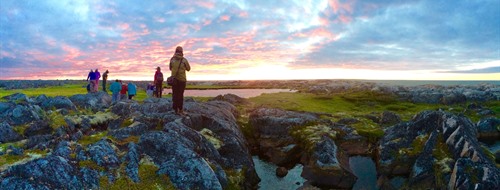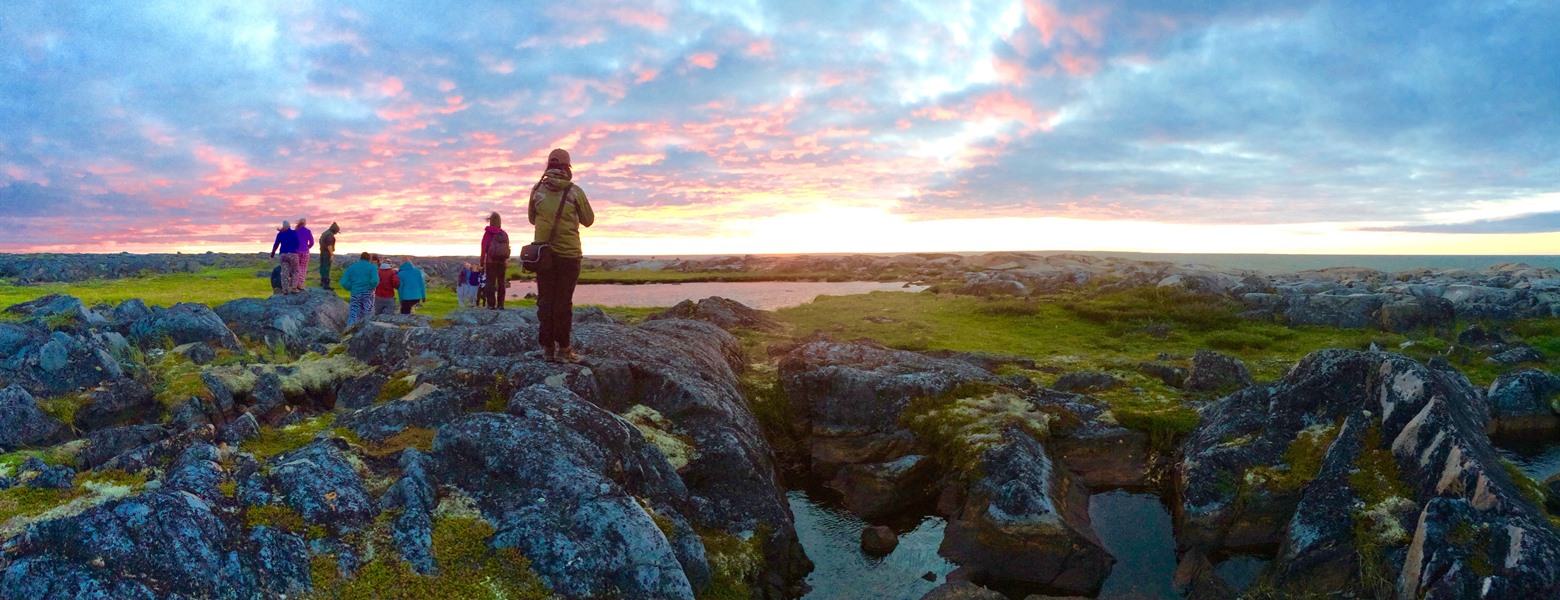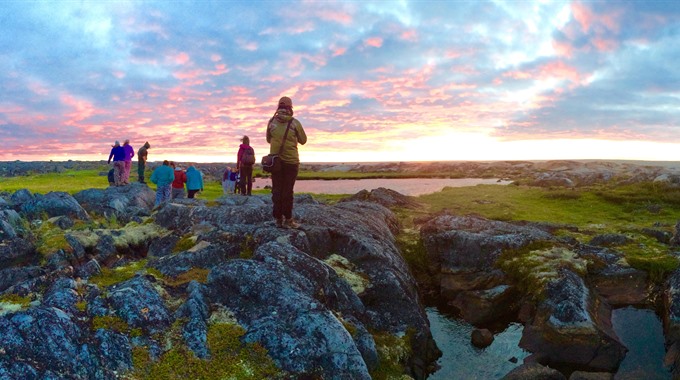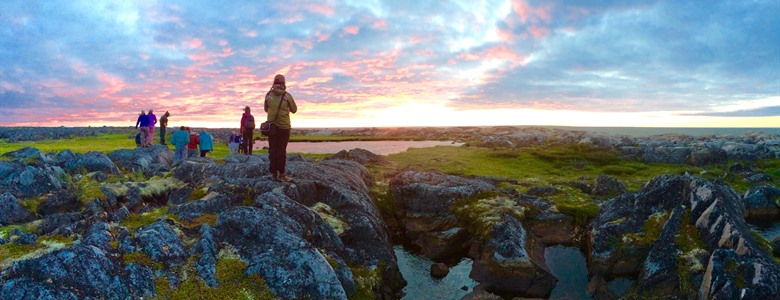Eyes on The North
February 8, 2021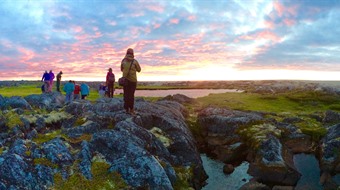
Kelvin students partner in international research
Photos courtesy of ISAMR program unless otherwise noted
Kelvin High School students are participating in frontline research of Canada's North as part of an international research partnership.
Five years ago, Kelvin joined with the Park School of Baltimore and the Canadian Junior Rangers from Churchill to form ISAMR (International Student-Led Arctic Monitoring and Research). Students conduct and lead the research and are mentored by Dr. Jane Waterman and Dr. Jim Roth from the University of Manitoba and Dr. Ryan Brook from the University of Saskatchewan.
Kelvin students regularly travel to Churchill in the summer and in October to participate in climate research.
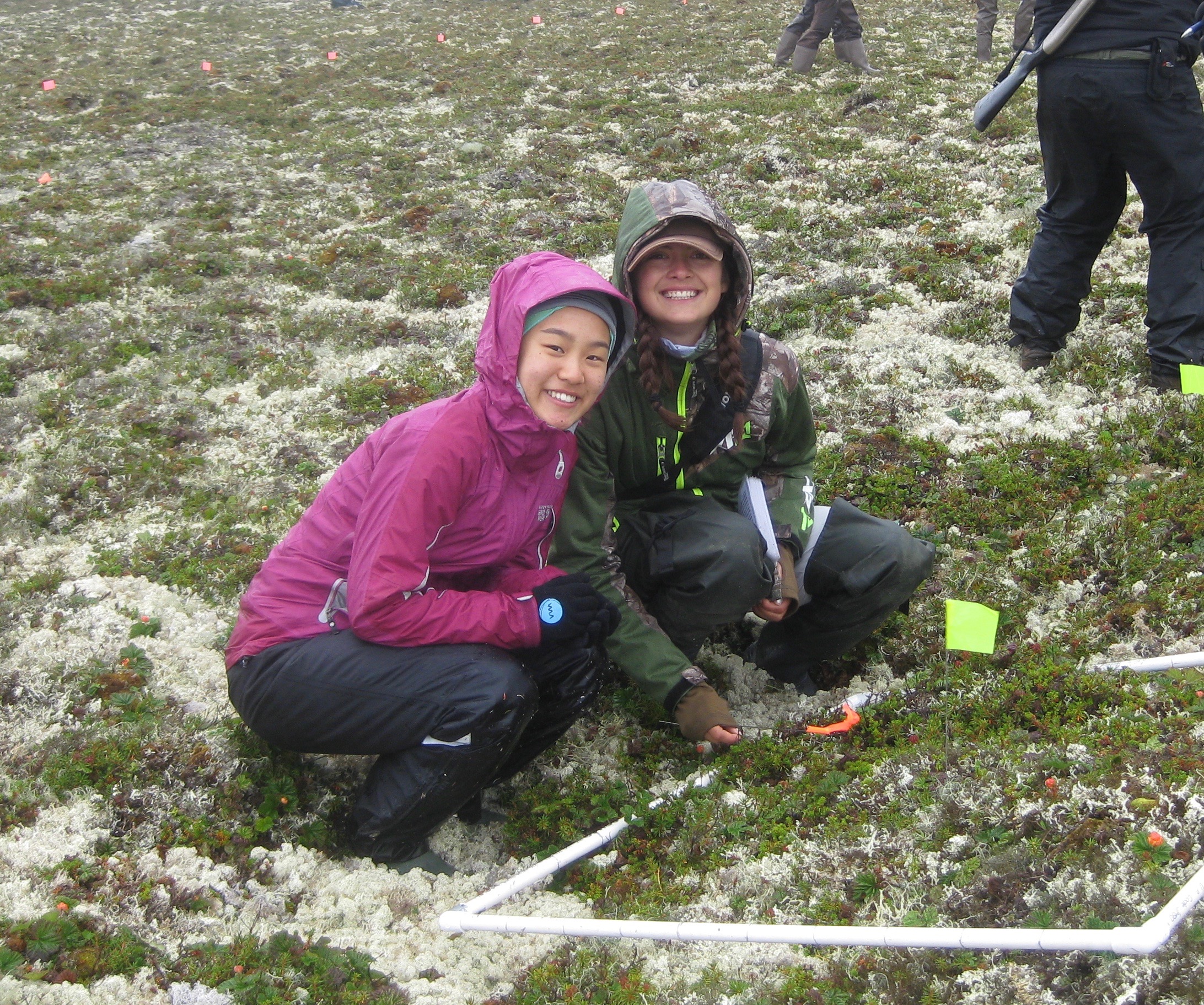
"What's amazing about these trips is that they are focused on science, but encompass so many other aspects of life. We learn about the history and culture of the North and most importantly, experience the beauty of the land by living right on the tundra. What a breath-taking experience to see the northern lights dancing across the sky or to watch arctic fox pups jumping and tumbling together," said teacher Donna Labun.
During several summer trips to Churchill over the past five years, students have participated in data collection for a project studying permafrost in the tundra. The hope is to develop a model for predicting the depth of the active layer—the layer above the permafrost that melts and freezes annually—based on surface indicators such as vegetation.
"The main point of this research is to see if there is a correlation between the vegetation cover on top and the active layer thickness," said student Grace Ma. "If there is a correlation, we could use this as a prediction model for the active layer thickness in the future."
Along with other representatives from Kelvin's ISAMR partners, Grace presented at the Wapusk National Park Research and Monitoring Symposium, held Dec. 1 in Winnipeg. The group presented a comparative look at two sampling methods of monitoring vegetative cover in sub-Arctic bogs and fens in the Greater Wapusk Ecosystem.
"It's amazing to have all of these scientists coming together and sharing knowledge on very important topics," Grace said. "The Arctic does need our help. With climate change happening, it is a pivotal time in this era to be sharing this awareness. Hopefully, students can take what we've learned from scientists and share it with other students. I think youth awareness is really important, because we're the future."
Another project, which is carried out during Kelvin students' October visits to Churchill, seeks to identify and track polar bears based on their unique whisker patterns. Students photograph bears via tundra buggy, and are then able to analyze their photographs and compare them back at Kelvin. They have also partnered with Dr. Stephen Peterson at the Assiniboine Park Zoo, and have documented whiskerprints from the zoo bears which allows for useful comparison of wild and captive bears.
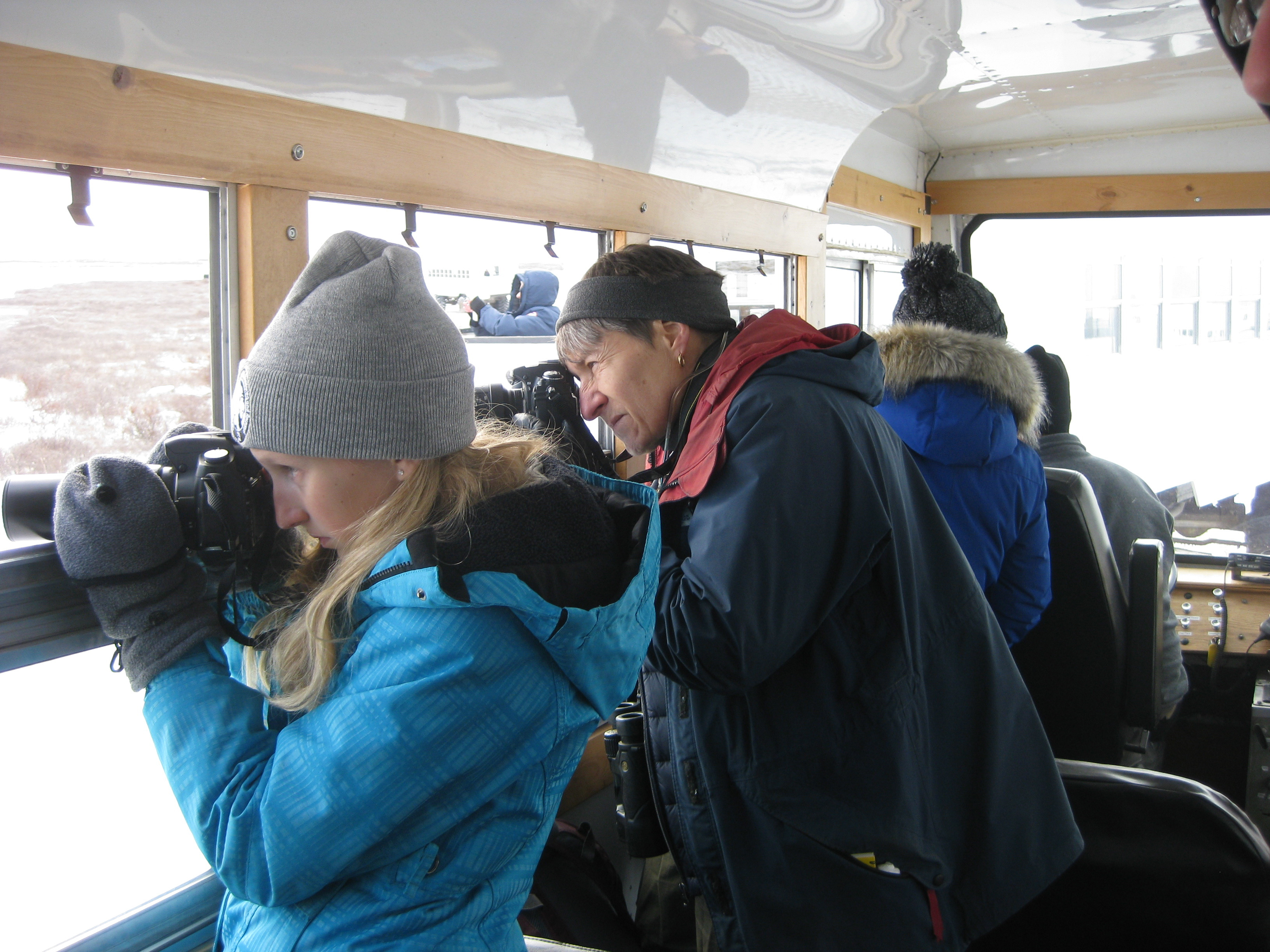
"By using Dr. Waterman's whiskerprint software we can take a photograph of a polar bear and run it against a bear library from previous years and see if there are any matches," Ms. Labun said. "It's a non-invasive way of identifying polar bears. We can track polar bears year-to-year and study different characteristics such as body-condition and body size."
In comparing bears over the years, the students have noted an increase in asymmetry between whiskerprints on each side of the bears' faces.
"This leads to the question of whether the asymmetry is an indicator of environmental stress and whether this stress is due to climate change. Answers may emerge as we look at asymmetry in connection with other indicators such as body condition," Ms. Labun said.
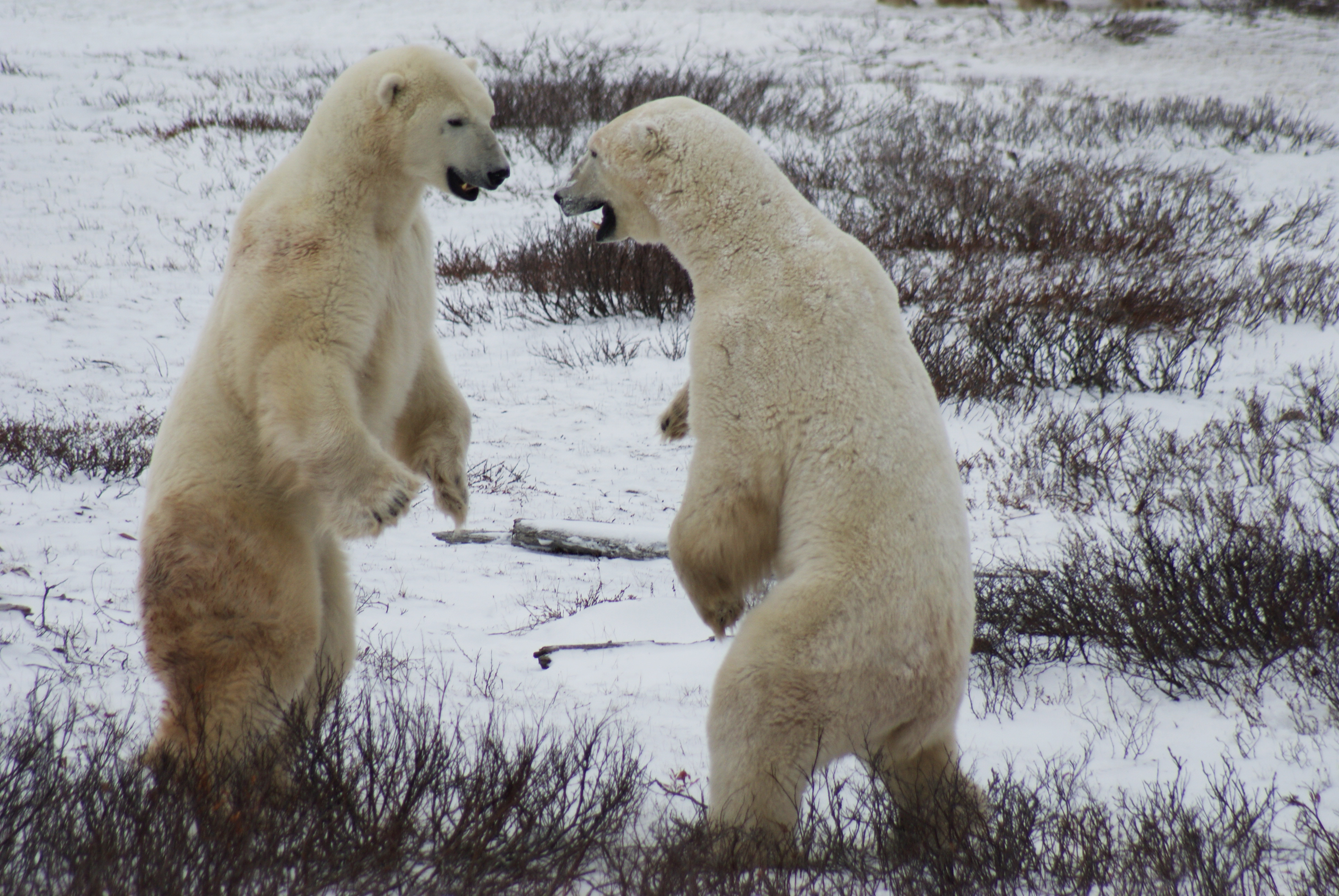
ArcticNet
On Dec. 7, Kelvin students presented research talks alongside graduate students and professors at the ArcticNet Conference in Winnipeg.
Students presented on monitoring permafrost dynamics and the recovery of vegetation cover in the recently burned lichen heath bogs of the Greater Wapusk Ecosystem, as well as a comparison of fluctuating asymmetry using Whiskerprint software as a marker of environmental stress in captive-born polar bears versus wild polar bears.
Students were also available to discuss their projects at the poster session in a common area in the Convention Centre, alongside posters of each research study.
The international conference was a great showcase of the ISAMR team's work.
"It's a welcome challenge to discuss what we've done with the scientific community," said student Sean Perry. "It's important to note that ISAMR is student led and teacher mentored—we're the ones who are choosing the direction we want to go to."
Sean presented on whiskerprinting alongside student Molly Ingenmey. The conference marked the first time high school students presented at an ArcticNet conference.
"It's nice to present on something that's student led," Molly said. "We're doing work that graduate students are doing; we're learning the processes and analyzing the data, rather than the teachers doing everything for us."
You can read more about Kelvin's ISAMR trips and projects at www.isamr.net .
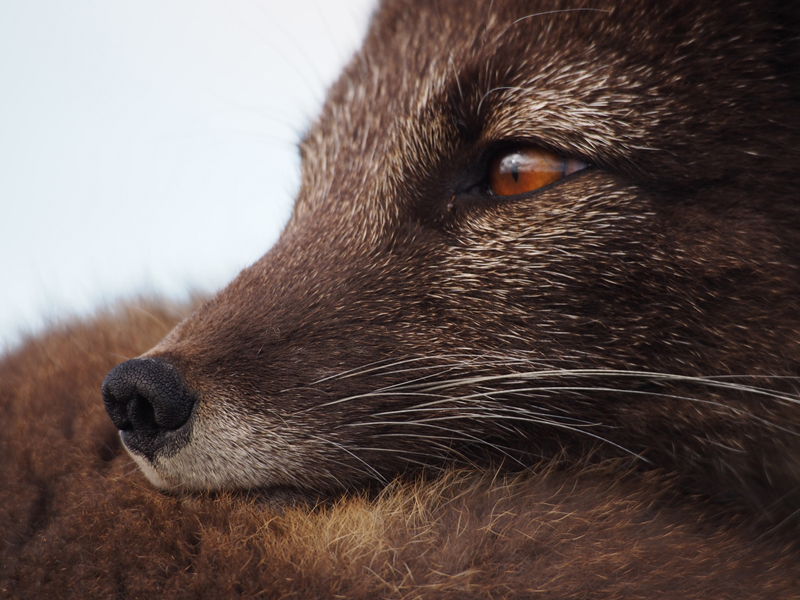
Arctic Fox Photo: Chloe Warret Rodrigues

